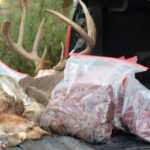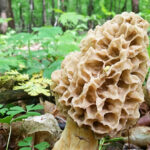Wherever you live in whitetail country, archery season is here! However, October bowhunting isn’t always bloody arrows and tailgate talk. It can be a grind if you cannot adjust to the multitude of factors impacting deer movement. Deer that hunters have been watching all summer and early fall have suddenly disappeared from their trail cameras and movement seems to screech to a halt. Why does that happen?
According to the experts you’re about to hear from, hunting pressure, weather patterns, rapidly changing food sources, and availability of cover likely play a role. Bucks can change patterns almost daily from early October up until the peak ‘pre-rut’ which is late October.
To guide you through this difficult period to hunt, I asked four well-known, successful bowhunters if the October Lull exists, and hit them with a few other questions that will help you decide how to go about hunting and locating bucks during this rapidly changing season.
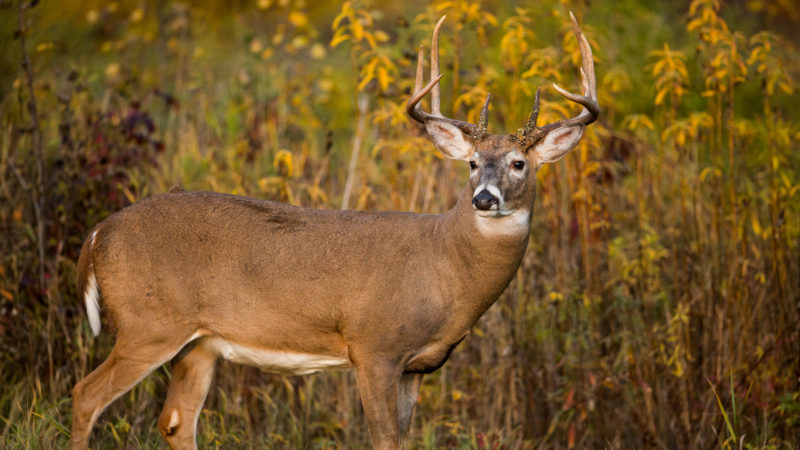
Is There an October Lull?
For this article, I pegged the dates of October 7th – October 20th as the commonly thought of ‘lull’ period. Here are a few thoughts I have about the October Lull. If you don’t adjust hunting locations or trail cameras in areas that fill their exact needs during a given time, you will miss some movement and experience a lull in buck movement during periods of early to mid-October.
You need to be precise in understanding and locating their forage and changing cover needs. Most hunters can’t keep up with these changes, and therefore experience slow deer movement on stand and via trail camera. Also, I believe there is some truth to deer not moving as far during certain periods of October because they don’t have to in order to eat. So, I think there is absolutely a lull if you don’t hunt or have trail cameras on what they’re eating during these times.
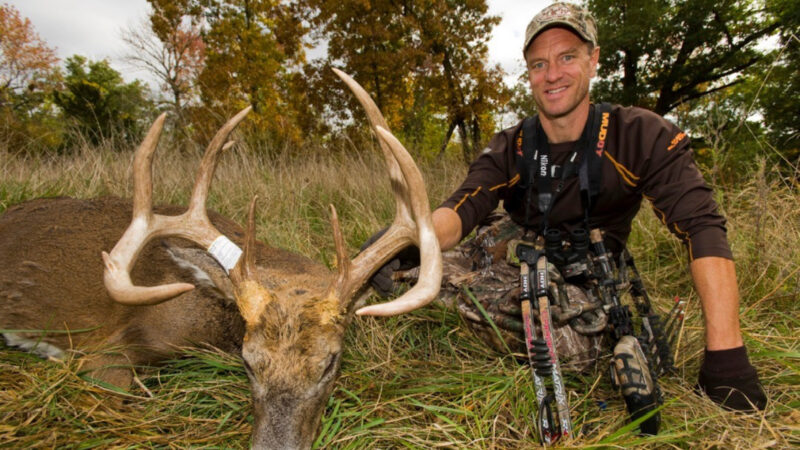
Enough with my thoughts, let’s ask some experts. When asked whether he believes in the October Lull, Bill Winke told me “I do believe there is a big behavioral change that occurs during that time of the year. It is not just related to an increase in hunting pressure because I saw it on our farm in southern Iowa where most of the deer never knew they were being hunted. I assume it has to do with rising testosterone levels in the bucks. They become reclusive, not visiting open areas as much as they did in September. Biologists say they are still on their feet in daylight, but if they are, they aren’t near my trail cameras!”
Jake Heubschman of The Hunting Public said he believes there can be a lull in movement, but it’s rooted in hunting pressure. “It seems like a lot of it is based off pressure. It seems to me like it’s the deer reacting to the huge influx of pressure that has occurred. In many cases, deer have grown used to minimal intrusion over the past couple months and when a bunch of people start hitting the woods, the deer react.”
I asked Jake what the fix is for hunters who can’t seem to find bucks throughout this time, and he told me “Hunters are not covering enough ground. You just have to keep the wheels turning until you get into deer sign. Bucks go to secure locations and stop moving as far during daylight hours causing most hunters to think they are “nocturnal” when in fact no deer is nocturnal, and they get up several times a day and browse around.”
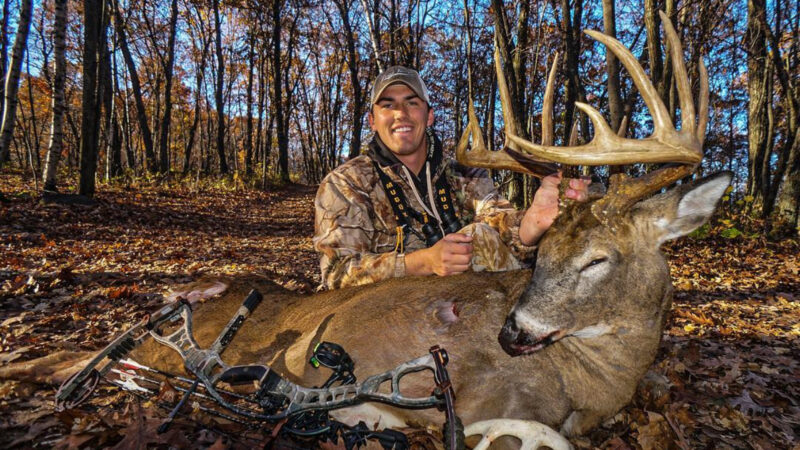
Jared Mills lives and hunts in Iowa and does not believe in a consistent slow period during the same time every year, but he told me, “I do think October in general can be prone to slower hunting compared to other months of the season for a variety of reasons – mainly warmer temperatures and rapidly changing food sources.”
Alright, so we have a ‘Mount Rushmore’ hunter in Bill Winke saying there is a bit of an October Lull, and it isn’t solely based off hunting pressure. Heubschman is an aggressive hunter and claims pressure is usually the root cause, and you just have to keep moving to find bucks. Then we have a certified killer in Jared Mills saying October can be susceptible to slower hunting due to a lot of changes happening. Now, let’s dive into a scenario and begin pinpointing other factors that can cause a lack of movement.
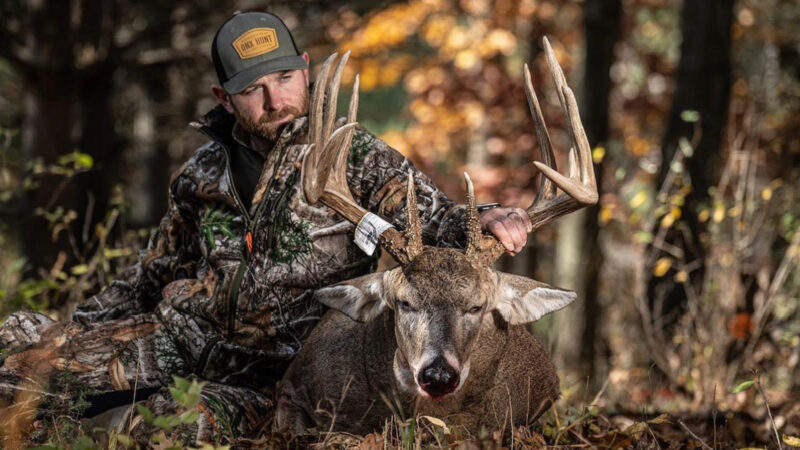
Why Bucks Aren’t Moving – With no Human Pressure
Scenario: A landowner owns 500 acres, and a few neighbors own large parcels of land as well. They all keep in touch, don’t live on their land, and no one has been on their properties or hunted for 20 days. Here it is October 12th, and all these landowners are seeing slower deer movement than what they saw on camera in mid and late September. The element of human pressure is not the reason for slow movement, so what is likely the cause for this lack of action?
Dan Perez is a founding principal partner of Whitetail Properties and regarding the scenario above he said, “Often what’s overlooked is the amount of food that’s available. There might be a lot of deer movement, but they’re only moving in small areas. We’ve had some tremendous acorn crops in recent years, and you won’t see them out in fields—you don’t see them out in the open.” Speaking of a bumper acorn crop, have you checked your oak trees? Throughout much of the whitetail’s range this year, it is a huge acorn crop. To find deer this October, you might need to get into the timber.
Perez also said, “The weather in general is a factor. What happened during that period for those landowners? Did they have any cold fronts, any temperature changes that encouraged movement?” Dan believes several factors such as the moon, barometric pressure, and food work in unison during this time of year and can create slower movement on low pressure land.
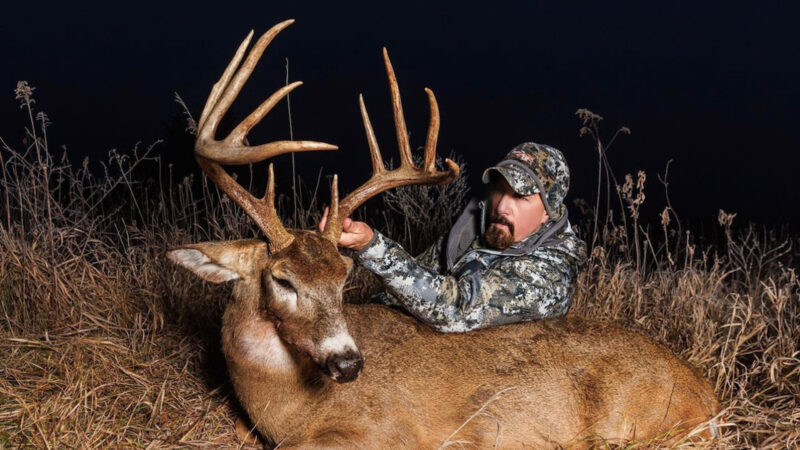
While I fully understand that university research studies have not shown a strong indication that cold fronts or high barometric pressure influence deer movement, I am here to say my own trail camera data and information that I’ve gathered over the years from top hunters shows the complete opposite. If there have been highs in the upper 70s and we get a drop in temperature with a high of 66 the next day, deer are likely to move further and earlier that evening.
Jared Mills has made a living on changing weather patterns to kill his target deer countless times over the years. In response to my scenario at the beginning of this section, he said “I would assume this stretch of slow days for the landowners did not include any cold fronts, as those are almost a guaranteed trigger of deer movement.”
In the scenario I presented we know that human pressure isn’t to blame, so changing cover and food might be the reason these landowners cannot find the bucks.
Cold Front – Drop Everything and Hunt?
The short answer is, yes. Of course, you can kill big bucks on above average temperature days in mid-October with no previous intel that would tip you off to a buck’s tendency, but they are unlikely to move very far. If you want to kill a buck on a day where deer aren’t expected to move well in October, you’ll need to be in close to bedding. This can be very risky.
Many hunters think waiting until a cold front is a great time to be aggressive and take one of those mid-season shots at a deer. But going in blind without conditions in your favor usually isn’t the right decision. Winke told me “If you are making wild guesses at what the buck might be doing and then going into the cover after him in an attempt to play out those hunches, you are hunting too aggressively at this time. You better wait until he is moving more so you can hunt him in funnels and other places to keep from being detected.”
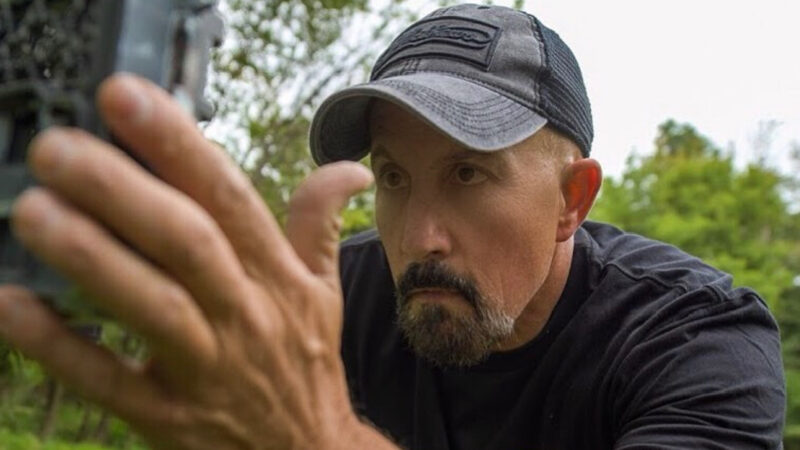
Wild guesses or not, we can’t read the mind of a whitetail, so hunters have to use scouting information to their advantage. Perez explained a common occurrence that’s happened to most of us while hunting. “Why is it that all the sudden deer get up out of their beds and appear in a field?” he asks. “What can’t we see that just triggered that? There are things that we can’t even explain. We think we have a handle on everything that does or doesn’t make them move, but we don’t. There are things that we can’t even explain.”
If certain phenomena are unexplainable as it relates to deer movement, are those cold fronts really that reliable? Is a cold front an automatic green light to go hunt even if bucks haven’t been showing up on camera?
Bill Winke says, “Yes for sure. That is definitely a green light for hunting your number one buck. Be careful to use smart entry and exit routes and play the wind, but the passing front (the day it passes and the day after) are times to hunt more aggressively.” If that cold front is in the 5-day forecast, you better make plans to be in the woods.
For just a second, think about how many changes are occurring in a whitetail’s body and throughout their environment in the month of October. Testosterone is sharply rising in bucks, they are gaining weight, soybeans are yellowing, acorns are dropping, browse is dying off, they are preparing to breed, leaves are falling, and cover is shrinking with each pass of a combine. If you can think of a month where bucks are experiencing more changes, I’m all ears!
Mills told me, “Cover is quickly disappearing, and this means deer are likely doing something different than what they were just a couple weeks prior.” When you think about all the factors at play, it’s no wonder you might be struggling to find deer – cover and food sources are literally changing by the day. Because of all the change occurring in October however, it lends well to mobile hunting.
Jake from The Hunting Public said “It seems like this time of year, if you can find a good community scrape, you can follow a rub or scrape line towards secure cover. Deer may not be moving as far during daylight which isn’t ideal, but it seems like a lot of times they are on some sort of pattern. So, using that to your advantage can be deadly.”
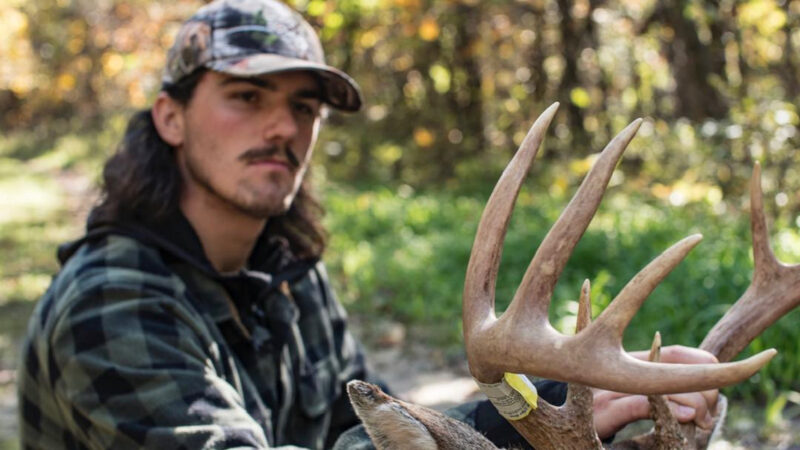
October hunting outside of the rut can also be about finding the funnels, even if deer aren’t yet chasing. Dan Perez grew up hunting wildlife management areas in Florida and took on a mobile mentality from the onset of his hunting career, often using tree spikes to do an old school hang and hunt.
Today, if you give him a map of a hunting location he knows nothing about, he says he’s heading to creeks if they are present. Perez said “Give me a few seconds to look at a map where the creeks are and I’m heading for the creek. You can catch an intersection on a creek faster than a fence line or anywhere else.” Hunting near water can be a great strategy during those slow, warm days of October.
Conclusion
Ok, so I didn’t totally solve the October Lull mystery. But I think these four hunters gave us some great insight into their thought process on how to attack the early to mid-October timeframe. Success in this period revolves around the weather conditions, adjusting to changing food and cover, and limiting human pressure on low quality days. When the conditions are right, dive in and you might punch that mid-October tag.

 By
By 